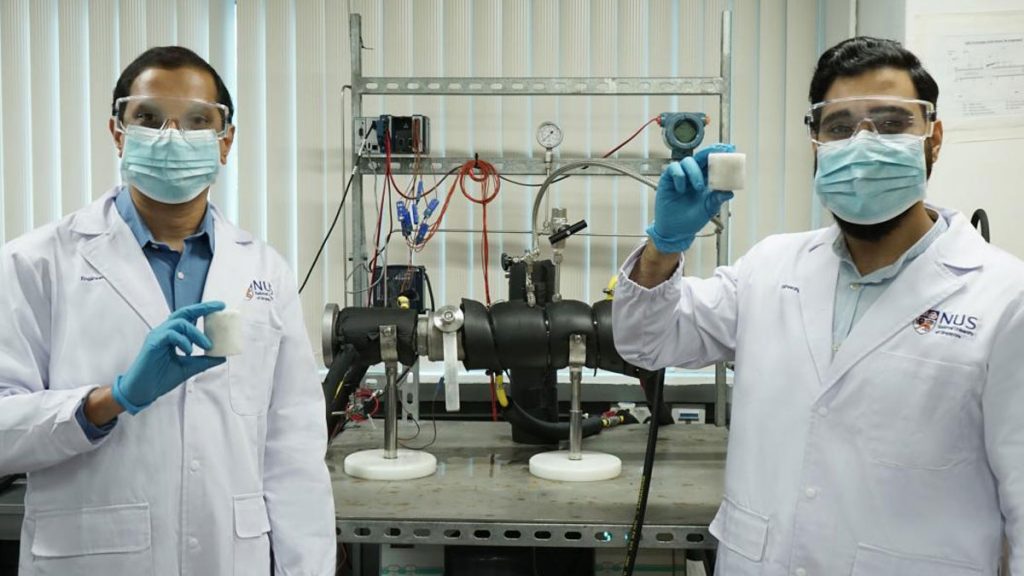
Singaporean researchers have developed a new process to quickly create solid hydrates of “fuel ice”, allowing natural gas to be stored safely and at convenient temperatures.
Trapping natural gas in “cages” made up of water molecules
As part of the work presented in the journal Energy & Environmental Science, a team of engineers fromNational University of Singapore (NUS) has developed a new way to convert the natural gas in solid form, allowing it to be stored more easily and safely. According to scientists, the process takes no more than a few minutes to complete and involves low-toxicity mixing.
Although it is a fossil fuel, natural gas remains today an essential source of energy, which could potentially facilitate the transition to renewable energies. Being dangerous to store or transport, the latter is often converted to liquid form for convenience, but this involves extremely low temperatures (around -162 ° C).
One emerging method is to convert gas into a solid form to facilitate its transport and storage, taking inspiration from nature. Under certain conditions, natural gas molecules can indeed be trapped in “ cages »Made up of water molecules, forming gas hydrates or combustible ice. Big problem: this process takes millions of years.
However, Singaporean scientists have managed to greatly reduce the time required for this conversion (15 minutes) thanks to the L-truptophan, an amino acid that speeds up the reaction rate and traps more of the natural gas more quickly in solid hydrates. According to the team, this new method is proving to be twice as fast as other methods currently being explored.
A shape with many advantages
” This is a real breakthrough, knowing that it takes millions of years for gas hydrates to form in nature “, Explain Gaurav Bhattacharjee, one of the study’s authors. ” By adding the right amounts of additives, the same process can now be done in the lab in just a few minutes. “
In the form of a block of ice, the resulting product is not only more convenient and safer to store and transport. In addition to occupying a 90 times smaller volume, it is found to be non-explosive and stable enough to be stored in an ordinary freezer at -5 ° C. According to the team, the process employed also has the advantage of using additives that are less toxic than those usually used in the field.
Although the method has so far only been tested in the laboratory, the researchers believe they will be able to obtain 100 kg of gas per day in the near future, which would bring it closer to industrial use.
Last year, Australian researchers had unveiled a technique to transform the CO2 in solid charcoal.
